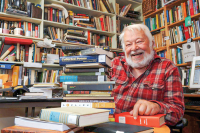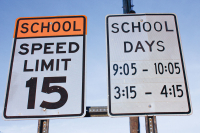The Naturalist's Corner
Snowbirds are here
No, I’m not talking about your Uncle Bernie and Aunt Esther from New York City. I’m talking about our feathered friends.
The snowbirds that have returned en masse to feeders all across the country are dark-eyed juncos. These little, mostly gray and white sparrows (family Emberizidae) commonly converge in flocks around feeders as winter settles in, thus the name snowbird.
Up until 1973 there were six species of juncos. But in 1973 the American Ornithologist’s Union grouped the five common North American juncos — slate-colored, Oregon, pink-sided, gray-headed and white-winged all under the moniker dark-eyed junco. That leaves two species of juncos in North America — the dark-eyed referenced above and the yellow-eyed junco, a predominantly Mexican species that barely reaches southern New Mexico and southern Arizona.
The dark-eyed junco is a widespread and abundant species. With an estimated population of 280 million, the dark-eyed junco is the second (behind the American robin) most common bird in the U.S. The dark-eyed junco breeds across most of Alaska and Canada to northern California and New England and down the Appalachians to northern Georgia. It winters from southern Canada to northern Mexico.
The southern Appalachians are home to their own resident race of dark-eyed juncos, Junco hyemalis carolinensis. Carolinensis is a vertical migrant, nesting at higher elevations in the mountains and retreating to lower elevations in the winter. The southern Appalachian race of junco can be distinguished at your feeder by bill color. Its bill has a bluish cast to it rather than the pink bill common in the other races of juncos. Even if the bill is light, it has a bluish-white, rather than pinkish-white tint, aptly described by friend and naturalist, George Ellison as “bone white.” Carolinensis also has shorter wings than its longer-migrating cousins but this feature isn’t very useful in the field.
As a general rule, males of migrant dark-eyed juncos winter farther north than females. Younger males winter farther north than older males. It is believed males stay nearer breeding grounds in order to get a jump on establishing nesting territory. It is believed that nearly 70 percent of juncos overwintering in the southern U.S. are females.
Dark-eyed juncos have an average of 30 percent more feathers (as measured by weight) during winter than during nesting season. This adds valuable insulation and helps them cope with cold weather.
Juncos commonly return to the same area, even the same feeders winter after winter. I have one carolinensis with a white tuft on the side of its head that is here for its third winter.
Take a peek at the snowbirds at your feeder this winter and see if you can distinguish between our resident carolinensis and their migrant cousins.
Don Hendershot can be reached at This email address is being protected from spambots. You need JavaScript enabled to view it.





